The Toyota Supra Mk4, also known as the A80, remains an icon in the world of performance cars – thanks in no small part to The Fast and the Furious and Gran Turismo. Launched in 1993 and produced until 2002, it was famous for its bulletproof 2JZ-GTE engine, balanced chassis, and sleek design, the Mk4 Supra is still highly sought after by enthusiasts, tuners, and even collectors today.
The Supra Mk4 was a leap forward from its predecessor, featuring a more refined design, cutting-edge technology. The heart of the Supra Mk4 is its 3.0-litre inline-six engine, the 2JZ-GTE, which in top spec features twin sequential turbochargers. With 276bhp in Japan (thanks to the “gentlemen’s agreement”) and 320bhp in other markets, the engine is famous for its durability and massive tuning potential. Stock, the Mk4 could sprint from 0-60 mph in around 4.6 seconds, but with basic modifications, the 2JZ-GTE can easily handle upwards of 600-800 bhp without breaking a sweat.
Beyond the raw power, the Supra Mk4’s engine is renowned for its smooth delivery and bulletproof reliability. The combination of a cast-iron block, forged internals, and a robust cooling system made it a favorite among tuners. This reputation has resulted in the 2JZ-GTE being synonymous with extreme builds, with some pushing well past 1000bhp.
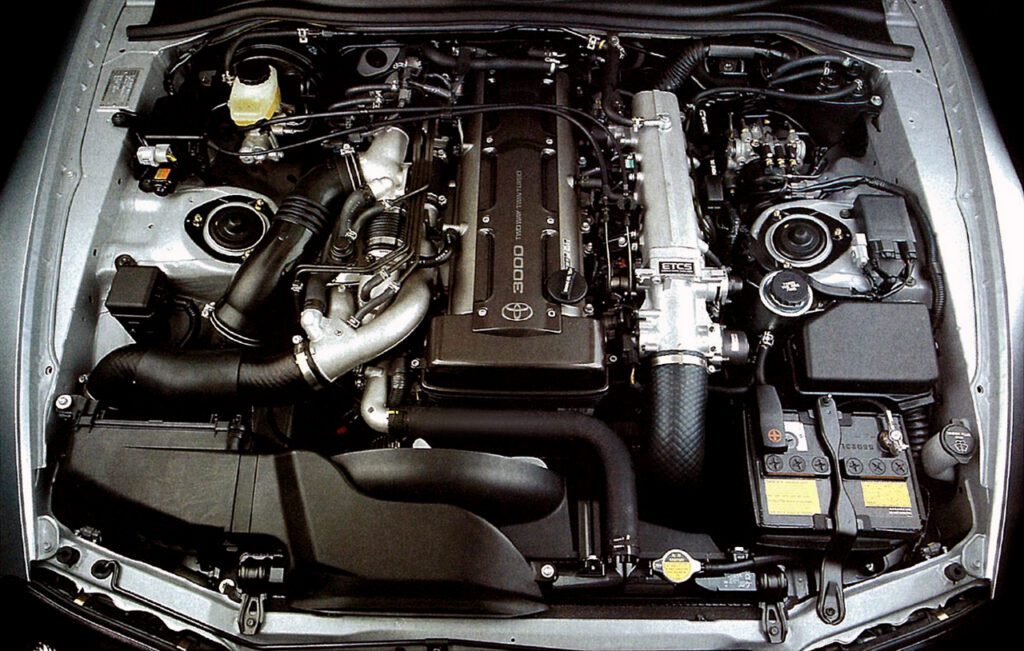
The Supra Mk4 isn’t just about straight-line speed. With its well-engineered chassis, it offered a remarkable balance of handling and comfort, although it was always designed as a high-swpeed GT rather than a sports car. The double-wishbone suspension setup at both the front and rear provided precise control and feedback – as well as adjustability – making the Supra an excellent performer on twisty roads and racetracks alike. Although not the smallest or lightest car, its near 50:50 weight distribution, aided by thoughtful weight-saving measures like an aluminum bonnet made it surprisingly nimble for a car tipping the scales around 1570kg.
The Supra’s braking system was equally formidable, featuring large ventilated discs and optional Brembo calipers that provided exceptional stopping power. The Mk4 also offered a six-speed Getrag V160 manual transmission that could handle immense torque and was paired with a limited-slip differential to ensure optimal traction.
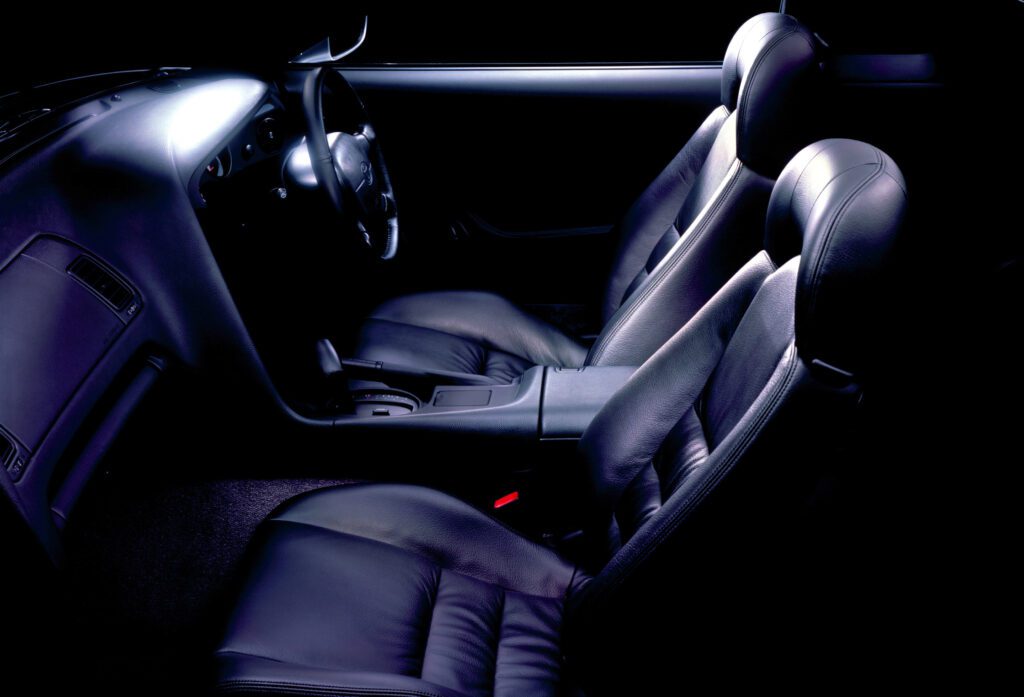
The exterior design of the Mk4 Supra is both aggressive and timeless. Its wide stance, low-slung body, and iconic rear wing combine form and function, aiding in aerodynamics and stability at high speeds. Inside, the driver-focused cockpit features a clean, logical layout with all controls angled toward the driver—a nod to Toyota’s sports car ethos. The build quality is typical of 1990s Toyota—solid, durable, and functional.
Toyota Supra Mk4 buying info
Buying a Mk4 Supra today involves more than just hunting for a clean body and engine. Given the car’s popularity in the tuning community, you’ll find many examples that have been modified, some to extreme levels. Here are the key things to keep in mind:
Engine & Drivetrain Condition: If you’re seeking a pristine example, aim for a car with a stock 2JZ-GTE engine and minimal modifications. High-horsepower builds are fun but can often mean increased wear and tear. Watch out for any signs of oil leaks, turbo lag, and worn-out internals. If the turbos have been replaced, check the quality and setup to ensure reliability. The Getrag V160 gearbox is virtually bulletproof but check for smoothness in shifting; any crunching or whining could be costly to fix as parts are getting hard to find.
Bodywork & Rust: While the Mk4’s bodywork was well-built, rust is now an issue. Check around the wheel arches, sills, and under the rear wing. Targa-top models are particularly prone to leaks, which can lead to rust in less visible areas. Ensure a thorough inspection of the underside.
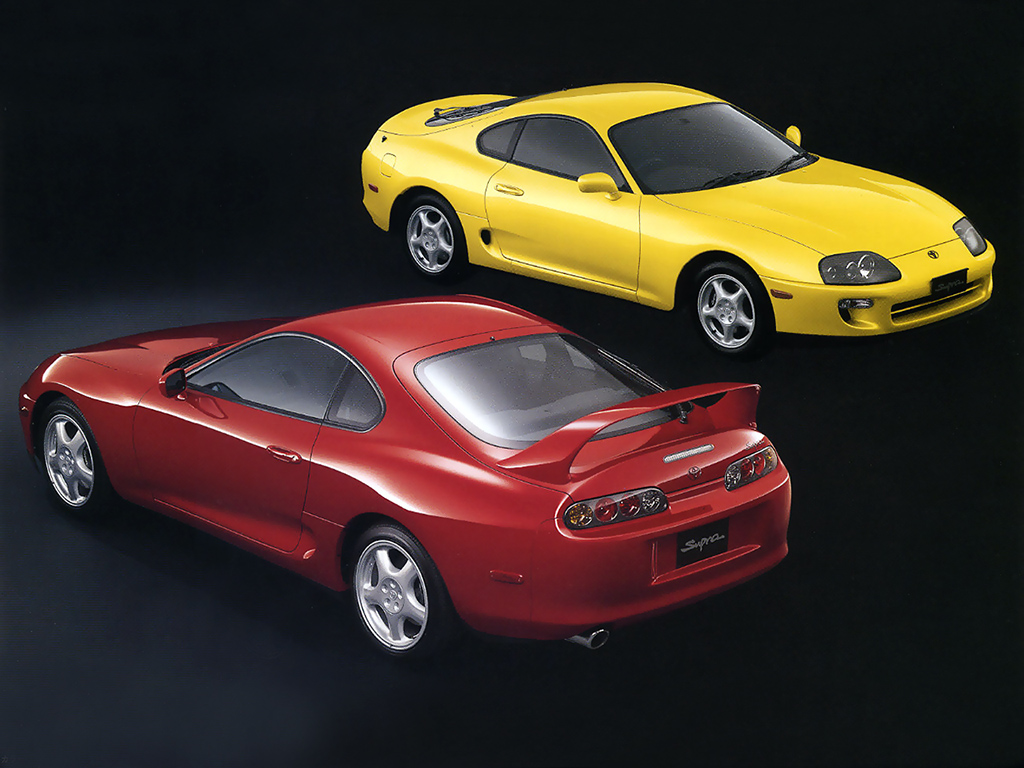
Suspension: The stock suspension setup was advanced for its time, but many cars have had their suspension lowered or swapped for aftermarket coilovers. While this can improve handling, it’s essential to ensure they are high-quality parts and that the installation was done correctly.
Interior Condition: The interior materials have stood the test of time relatively well, but worn-out bolsters, cracked dashboards, and sun-damaged plastics are not uncommon. Originality adds value, so finding a car with an untouched interior is ideal but now increasingly difficult. If you buy a modified car expecting to find the parts to easily convert it back to standard, expect to spend a lot of money.
Provenance & History: Service history is crucial. A comprehensive record of maintenance, including oil changes and timing belt replacements can speak volumes about how well the car has been looked after. Given the Supra’s popularity for modification, a well-documented, low-owner car with minimal mods will always fetch a premium.
Prices and Market Trends
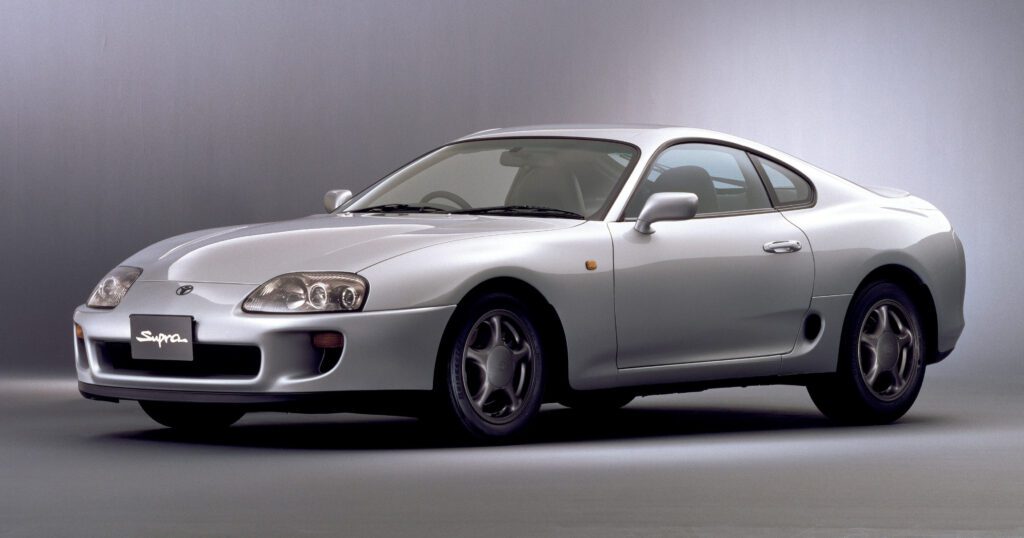
The Toyota Supra Mk4 market has skyrocketed in recent years, driven by a combination of rarity, nostalgia, and pop culture references. Clean, low-mileage examples of the Twin Turbo manual (especially the UK-spec models) are fetching anywhere between £50,000 to £120,000. Automatic models and naturally aspirated variants are more accessible, ranging from £30,000 to £50,000.
Modified cars have a more varied price range, often depending on the quality of modifications and the reputation of the builder. Highly modified Supras with substantial power gains can also command significant prices, but potential buyers should be cautious and consider the long-term reliability and value of such builds.
The Mk4 Supra has undoubtedly cemented itself as a modern classic. Its combination of reliability, performance, and a strong enthusiast community means that well-kept examples are likely to continue appreciating in value.
Toyota Supra Mk4 A80 specifications
| Production Years | 1993 – 2002 |
| Engine | 2,997cc Inline-6, 24-valve, Twin-Turbocharged (2JZ-GTE) / Naturally Aspirated (2JZ-GE) |
| Power Output | 276 bhp (Japanese spec, 2JZ-GTE), 320 bhp (Export spec, 2JZ-GTE), 220 bhp (2JZ-GE) |
| Torque | 318 lb-ft (432 Nm) @ 3,600 rpm (2JZ-GTE), 210 lb-ft (285 Nm) @ 4,800 rpm (2JZ-GE) |
| Transmission | 6-speed Manual (Getrag V160) / 4-speed Automatic |
| 0-62 mph (0-100 km/h) | 4.6 seconds (2JZ-GTE, Manual) / 5.4 seconds (2JZ-GE, Manual) |
| Top Speed | Electronically limited to 155 mph (250 km/h) |
Dimentions and weight
| Length | 4,514 mm |
| Width | 1,811 mm |
| Height | 1,276 mm |
| Weight | 1,570 kg (3,461 lbs) for Twin Turbo; 1,490 kg (3,285 lbs) for Naturally Aspirated |
The TOM’S Supra 500 racing car
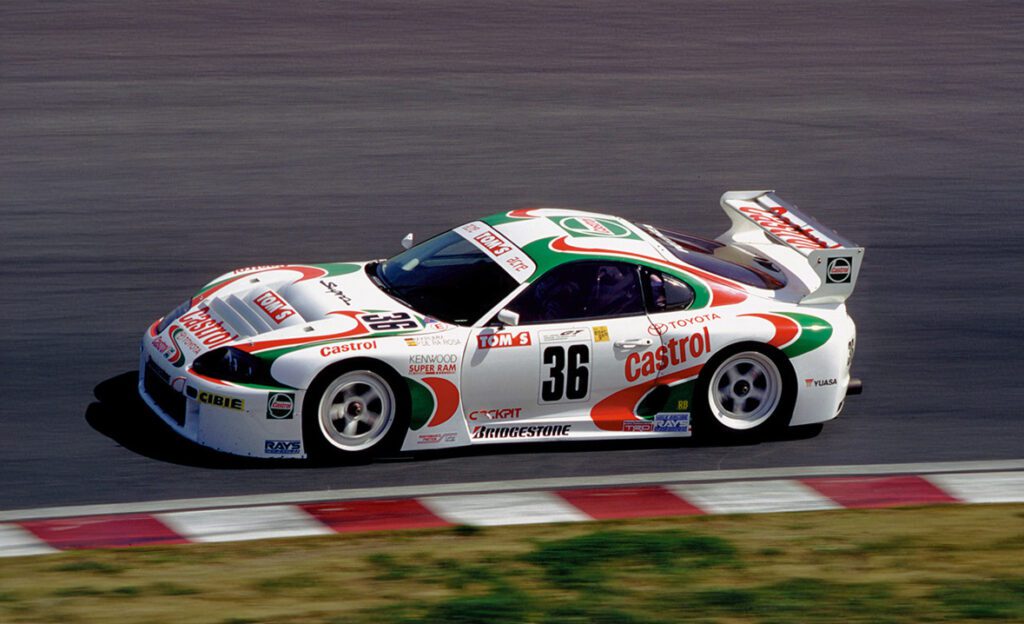
The TOM’S Supra 500 racing car stands as an icon in the world of Japanese motorsport, particularly known for its surprising departure from the typical Supra powerplant. Unlike the road-going Supra Mk4’s six-cylinder 2JZ-GTE engine, the TOM’S Supra 500 was equipped with a highly-tuned 2.0-litre four-cylinder engine. Specifically, it utilised a version of the turbocharged 3S-GTE engine – a choice that balanced power output and weight, allowing for superior handling and agility on the racetrack.
Developed by TOM’S, a top-tier Japanese tuning and motorsport company, the Supra 500 was built to compete in the All Japan Grand Touring Car Championship (JGTC), now known as Super GT. With over 500 horsepower on tap, a lightweight chassis reinforced with carbon fiber, and an aerodynamic body kit designed for maximum downforce, the TOM’S Supra 500 was a formidable contender. Its racing pedigree, combined with its distinctive Castrol livery and unique engine choice, made it a standout in the JGTC series and an unforgettable chapter in the history of Japanese motorsport.
The Supra in The Fast and the Furious
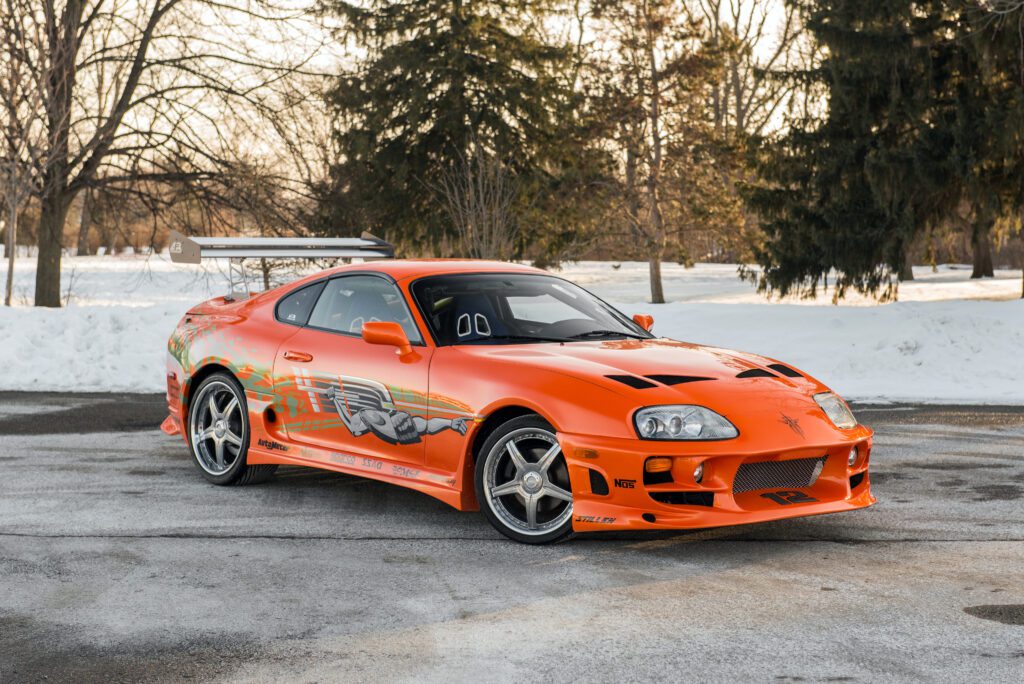
The Toyota Supra Mk4 gained legendary status in car culture largely due to its unforgettable appearance in the 2001 film The Fast and the Furious. Driven by Brian O’Conner, played by the late Paul Walker, the bright orange Supra became a symbol of the underground street racing scene depicted in the movie. Its striking appearance, featuring a custom Bomex body kit, APR wing, and the iconic “Nuclear Gladiator” livery, captivated audiences worldwide and cemented the Supra’s reputation as a high-performance tuner car.
This cinematic portrayal transformed the Supra from a respected Japanese sports car into a cultural phenomenon, inspiring a generation of car enthusiasts and tuners. The movie showcased the Supra’s potential for extreme customization and high horsepower builds, making it a dream car for many. Its prominence in The Fast and the Furious franchise not only skyrocketed the Mk4’s popularity and value but also solidified its status as an icon of automotive pop culture, representing speed, style, and the spirit of the street racing era of the early 2000s. One of the original stunt cars from the film (pictured above) sold for $120,000 via Mecum Auctions in 2015.
